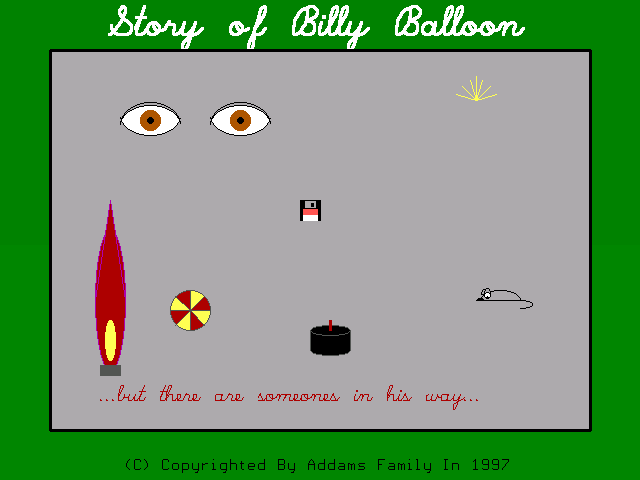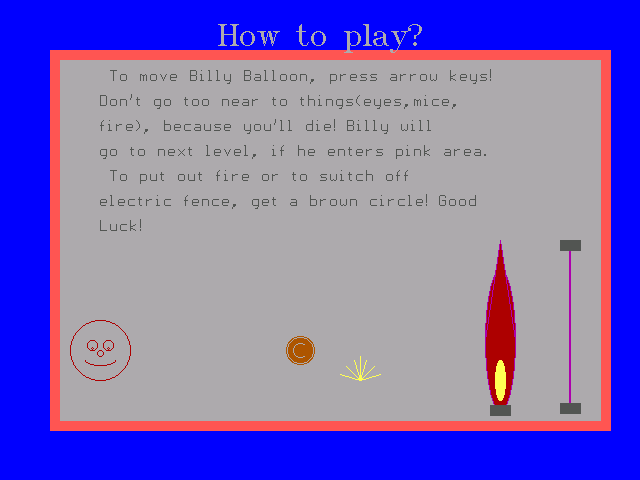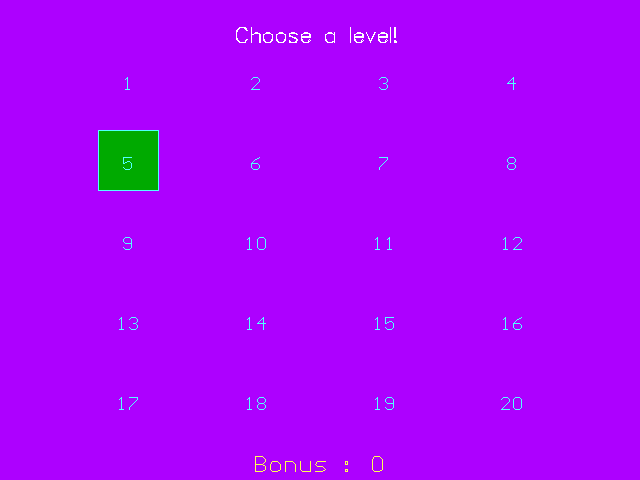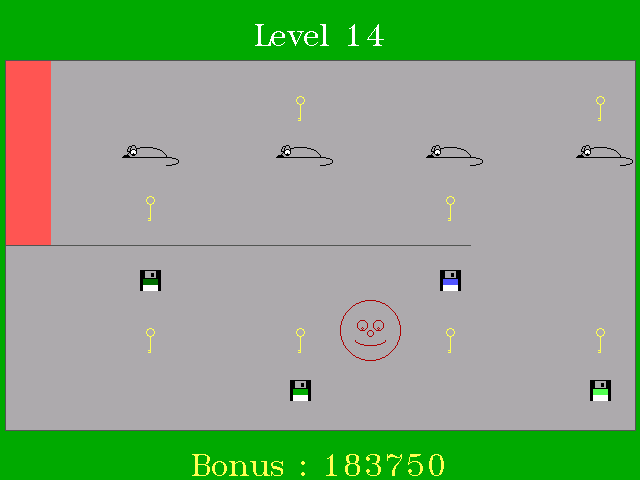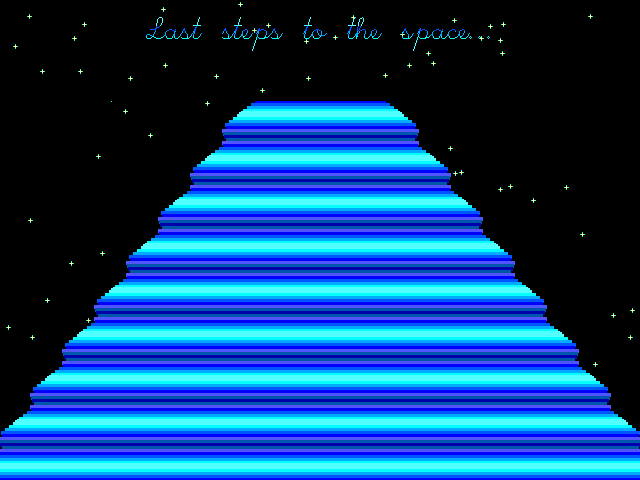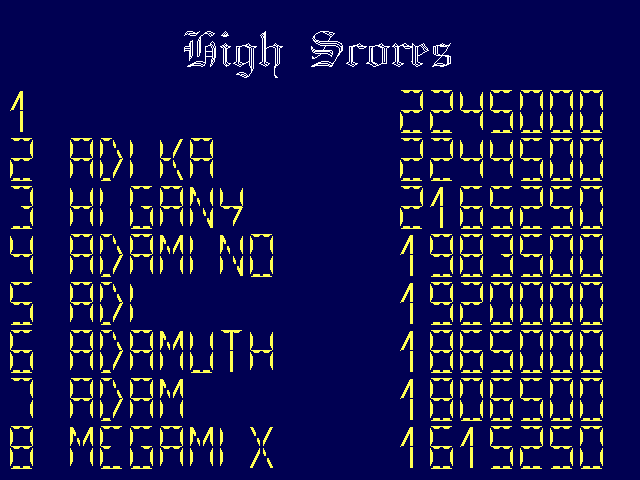Balloon (Part One) is about a (surprise, surprise) balloon named Billy, whose string just broke, and now he has to navigate the chaotic sky above the town, to safely reach space. The air is filled with a wide variety of objects out to burst poor little Billy – although they don’t move at all, and just a few of them would be an actual threat to a balloon in reality. Some of them even have a round shape, but I wasn’t very mindful about the design.
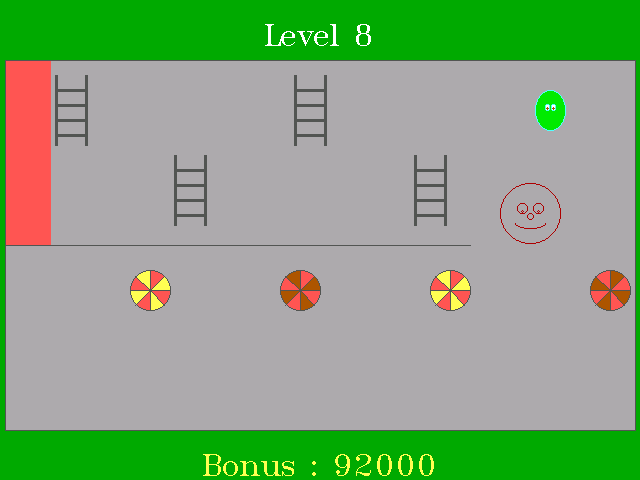
Apart from object placement, all levels look the same, and play out the same way too: Billy must reach the light red area on the top left to proceed. The levels can be played in any order – although some of them require a trick or two to get through, for instance using walls to adjust the balloon’s position just enough to avoid objects, or recognizing a fake laser beam that you can actually pass through without taking any injuries.
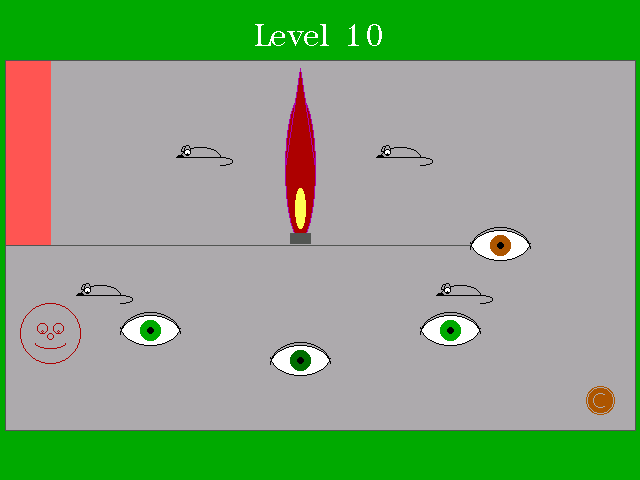
Billy can be moved sideways, or up & down by a fixed amount of pixels using the arrow keys. You start each level with a bonus score that decreases with every keystroke, so the fewer moves you make, the more points you get for that level. If you burst the balloon, no points are awarded of course, and you can’t retry that level again. When you complete all levels, your points are added up, and you get to see the ending: reaching space. Lives are not counted, so you can just pop Billy on all the levels, and still get to the ending, albeit with a score of zero :). Anyway, if your score is high enough, you may enter the hall of fame… yes, there’s a high-score list maintained by the game.
The game comes with a brief story, an in-game manual, a demo gameplay, a teaser page for another (never finished) game of mine, English & Hungarian localization, and even a Christmas add-on with 5 levels and some additional artwork including a strangely black cake. The game also spawned a sequel, called Rocky Rocko: Balloon Part Two.
When I started this project back in 1998 (I was 14), I barely had any experience with game engines or how to organize code. I was somewhat familiar with the basics of programming in Pascal, and I had ideas about how the game should play out, what screens I should design, and what components should be implemented. However, I wasn’t able to connect all these in a neat and tidy way, and the project quickly became a nightmarish example of spaghetti code:
- lots of code duplication,
- unintuitively named global variables – many of which could have been local anyway,
- ugly indentation,
- magic numbers,
- includes and units mixed insensibly.
I sat down recently to take a look at the game source files. I do this from time to time with various projects I worked on as a child. My programming skills were pretty much lacking back then, but my creativity was untamed, and I was also very enthusiastic. I pushed myself, experimented with different game ideas and genres, and created simple, yet intriguing stuff. Most of my projects were left unfinished, but I still feel I accomplished something.
Just for the sake of nostalgia, I’m going to revisit my games and projects, to see if I can make them any better with my current knowledge and experience. I’m going to post my progress and codes on this site, so everyone can have a look.
For the Balloon game I’m going to implement:
- proper timer and keyboard interrupt handlers,
- a primitive sound engine for the PC Speaker,
- double buffering in 320×200 MCGA mode, but sticking with the original 16 CGA/EGA colors and the BGI library,
- a simple sprite engine to speed up drawing,
- enhanced gameplay elements,
- all written in FreePascal and Assembly for MS-DOS in real mode (using 640k conventional memory only), just like back in the days.
Let’s dive into, and remake Balloon Part One!
